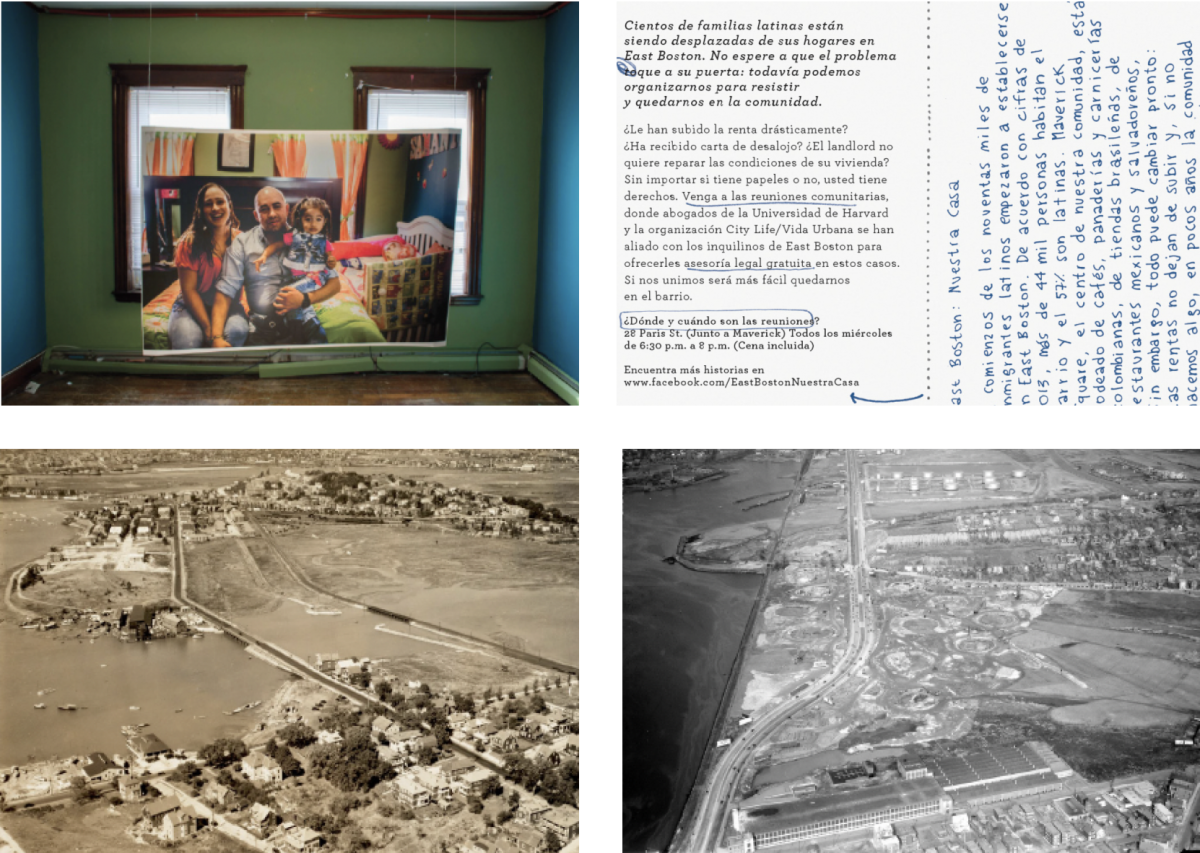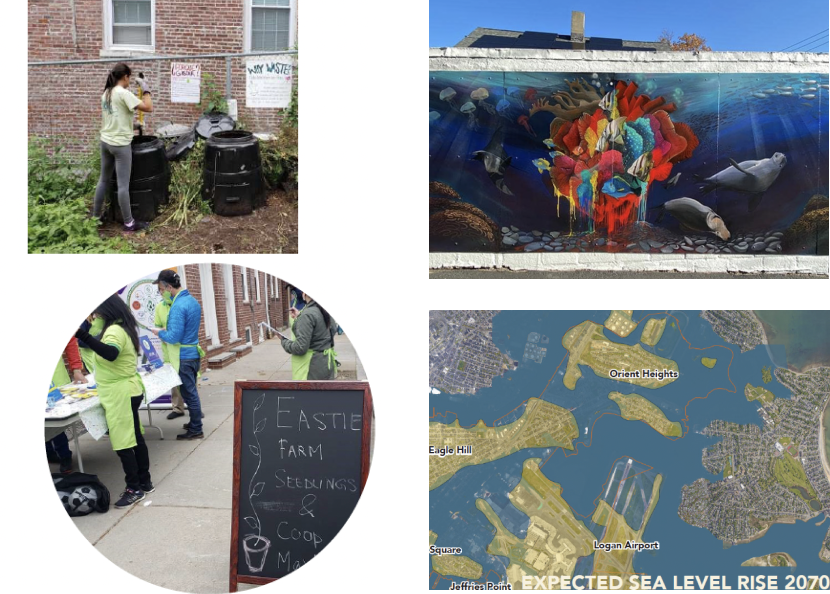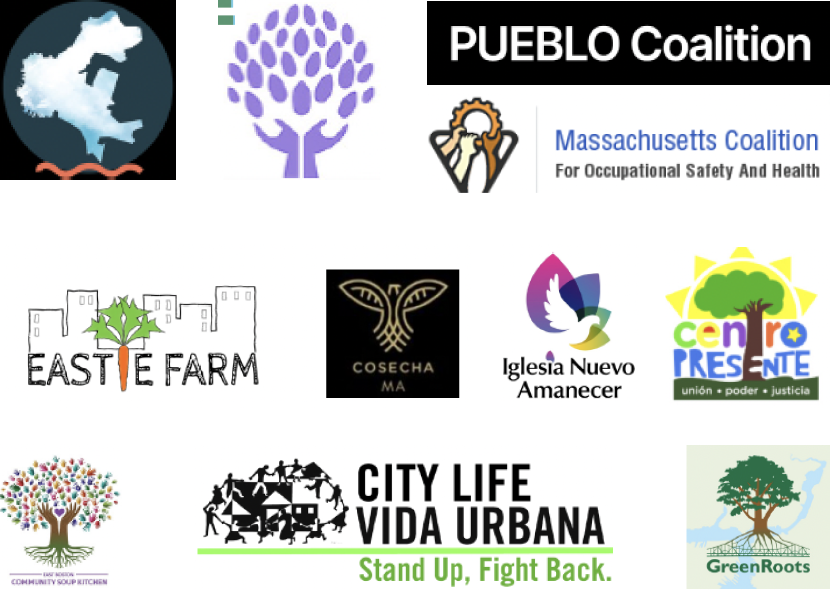



STORYTELLING IN EAST BOSTON
This pamphlet explores storytelling’s role in envisioning a neighborhood’s future and different approaches to storytelling used by East Bostonians. Highlighting examples of community members and organizations that have made their narratives heard, the foldout aims to inspire current neighbors to engage with the history of the land, share their own stories and think about ways to foreground “community treasures” in Eastie.

HISTORIAS: STORYTELLING IN EAST BOSTON

Ways of Storytelling: Recounting Histories, Rituals, Art, Maps, and Alternative Narratives
There are many ways to practice storytelling. We can look to how people have told stories in the past to guide us. You may like one of the ways of storytelling in this toolkit, or you may do something completely different. You may be inspired by previous forms of storytelling, or respond with your own perspectives to narratives from the past you may not feel are representative. While looking at these examples, think about how you would tell your story or the story of your neighborhood. For example, Jorge Caraballo Cordovez tells stories of East Boston through postcards! His social journalism project uses postcards to tell the Latino community about the current housing crisis and where to get resources to face it. He mails postcards with stories to neighbors.
Sometimes, “history” feels like memorizing timelines and dates in history class at school. But history is a form of storytelling. It’s a way that we can connect with those who came before us. Every history that’s told is a story, representing a certain view of the world. We all have personal histories, family histories, and community histories. Landscapes have histories, too! What makes these stories histories is that they’re told through observing “primary sources.’’ These are artifacts that speak and tell you about the past. Primary sources can be anything from diaries, newspaper articles, photographs, or just talking to people about the past! There’s so much to learn from the past. With many histories about a place, we can envision many futures.
Rituals, Honor & Meditation, Art, and Maps
Art can be a way of disrupting the way we think and giving us new ways of knowing. For example, drawing what we see in nature doesn’t need to be scientific, and doesn’t need to accurately represent nature. Nature is everywhere. It’s in the roads, in our front yards, and even maybe parking lots. Art can be abstract. It may show the emotions that being in nature produces. Making music is a celebration of life. It is both a sound of resistance and a window into how people live. Maps tell stories, too. They can’t show the sounds of trees and birds, the smell of the air, the long histories of the landscape or the names of the people who live and have lived in these places. Maps are wonderful storytelling tools, but we can make them more than top-down views. Can we re-imagine maps and how they’re used? How could we show a neighborhood and actually tell its stories? Past maps of East Boston have shown how land was created across the former marshland. Today’s maps often show the neighborhood is vulnerable to flooding and sea level rise. While these mappings are useful, they hide other things that happen on the land. They hide human stories and histories — treasures and memories held by people now and people of the past. Maps of East Boston, for example, don’t often show the Belle Isle Marsh teeming with life, a vast and intricate ecosystem in less than 200 hundred acres. Maps don’t show how people engage with each other and with the ecosystem. Instead, you’ll just see a green area, flat and monotone. What’s lost in these traditional mappings?


Telling Different Stories: Organizations telling their own stories of East Boston
Different organizations have different stories to tell.
Neighbors United for a Better East Boston: NUBE is an organization that develops abundant leaders who support social transformation and shifting political power. Center for Cooperative Development and Solidarity: CCDS provides technical, educational, and organizational support to current and potential members of cooperatives in East Boston. People United in East Boston for Liberation and Organizing: PUEBLO is a coalition of stakeholder organizations that preserve and enhance East Boston’s neighborhoods so that they are accessible and affordable. Mass Cosh Immigrant Worker Center: The Immigrant Worker Center is a safe place for immigrants to speak up about workplace abuse and join with a powerful network of workers demanding safe and healthy working conditions. Mutual Aid Eastie Coalition: Mutual aid is a form of solidarity-based support system where communities unite against a common struggle, rather than leaving individuals to fend for themselves. Iglesia Nuevo Amanecer: Iglesia Nuevo Amanecer is a faith-based group deeply engaged in the communal and individual pursuits of liberation and love. Centro Presente: Centro Presente is a member-driven, statewide Latin American immigrant organization dedicated to the self-determination and self-sufficiency of the Latin American immigrant community of Massachusetts. East Boston Community Soup Kitchen: The East Boston Community Soup Kitchen opens every Tuesday to provide free meals for all those who enter our doors. City Life Vida Urbana: City Life/Vida Urbana is a grassroots community organization committed to fighting for racial, social and economic justice and gender equality by building working class power. Greenroots: GreenRoots is a community-based organization dedicated to improving and enhancing the urban environment and public health in Chelsea and surrounding communities.
Counter Maps
